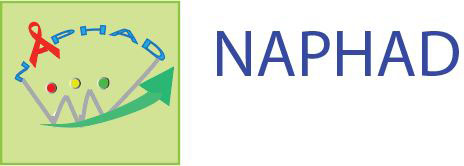The project titled “USAID; HIV Prevention, Testing and Treatment Services for Key Populations in Amhara Region Project” is being implemented at 36 SNUs in Bahir Dar, Awi, East Gojam and West Gojam Zones of Amhara National Regional States. The comprehensive HIV Prevention, Testing and Treatment services are mainly grouped into Behavioral, Biomedical and structural interventions and is being implemented in community settings to enhance its targeted testing approach including scale up of index case testing, HIV self-testing and community ART for epidemic control.
The community linkage between female sex workers and their clients plus women engaged in transactional sex peer networks, community level DIC providers and public laboratory facilities will enhance the HIV case identification, linkage to treatment and tracking of viral load suppression towards achieving the UNAIDS and PEPFAR goal of 95-95-95 and epidemic control. NAPHAD has deployed different techniques and innovative approaches especially to meet the three 95 targets and it uses different yield maximizing approaches such as SNS, ICT, and Peer and Partner Notification. In this project NAPHAD is committed to meet 100% linkages for those who are newly identified as HIV positive.
Project Goal
Achieve local HIV epidemic control through delivery of high impact community based HIV services for Key and Priority Populations
Objectives:
- Improved case identification through targeted testing strategies including ICT, HIVST, and reaching sexual networks for key and priority populations
- Increase availability of high-quality HIV prevention services to reduce HIV incidence among key and priority populations in community-based service delivery points
- Saturation achieved through increased access to ART and improved coverage through provision of differentiated care models including treatment in drop-in centers for key and priority populations
- LTFU reduced through improved linkage, adherence, and retention interventions including same-day ART
- Increased viral load suppression through sample transport and results tracking from community service delivery points to viral load testing sites.
- Reduced co-infection of HIV/STIs through increased use of SRH/GBV services integrated with HIV services by key and priority populations
- Improved utilization of the Unified Data System (US) for program monitoring and case management
- Increased Continuous Quality Improvement (CQI) of HIV services targeting key and priority populations
The technical Areas of the project include;
- Increase access to community-based comprehensive HIV services for key and priority populations
- Provide pre-exposure prophylaxis (PrEP) for FSWs
- Strengthen identification of FSW sexual networks, partner notification, and tracing to increase case identification and linkage to services
- Initiate and institutionalize recency testing for adults turned positive
- Reach KP/PPs, including at-risk out-of-school AGYW, in each intervention town with the full package of comprehensive HIV services
- GBV case identification and post-violence clinical care
- FP/HIV integration
- TB/HIV integration
- Cervical Cancer, demand creation, screening, treatment, and referral
- Capacity building on COMMCare
- Implement evidence-based planning
- Establish data base system
- Conduct routine Monitoring and follow up
- Conduct supportive supervision
- Establish data quality improvement committee
- Conduct data auditing
- Develop program improvement documentation and dissemination
- Learning and reflection







